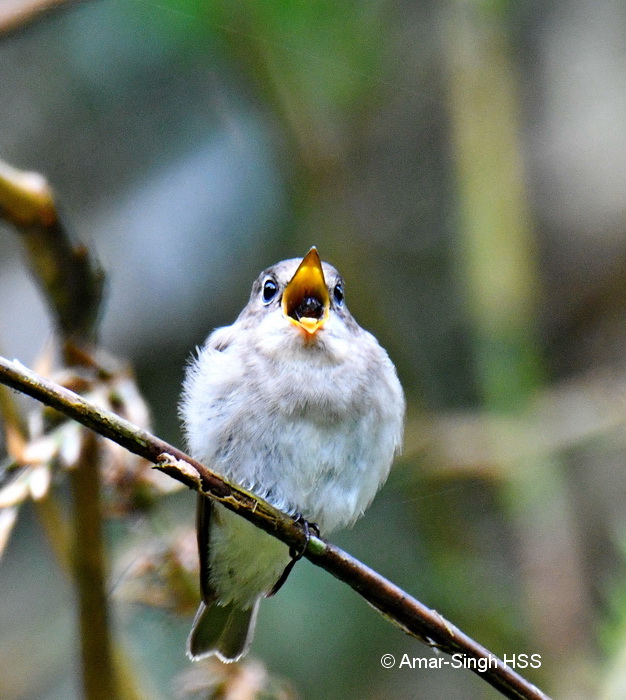
“It was a cold morning and this Asian Brown Flycatcher (Muscicapa dauurica) was sitting fluffed up, immobile (for a change), fairly low down. It was still quite early and I doubt it had started feeding for the morning. While I was watching it proceeded to regurgitate a pellet, which surprised me. It then proceeded to commence feeding.

“I have seen Asian Brown Flycatcher take mainly small insects, larvae and fruit. I tried to locate the pellet but the dense, dark ground cover and small size of the object limited my ability to find it. It may be made up of exoskeletons of insects and indigestible plant matter.

“I tried to locate any information on pellet regurgitation by Asian Brown Flycatchers but a net search did not offer any images or articles. Other Flycatchers with pellets in my region:
1. I have seen a Large Niltavas (Niltava grandis decipiens) with a possible pellet LINK.
2. There is a report of a Ferruginous Flycatcher (Muscicapa ferruginea) with a pellet LINK.
3. OBI has an image of a Bornean Blue Flycatcher (Cyornis superbus) casting a pellet LINK.

“A pellet may take 6-10 hours to form (overnight). It is possible that we do not observe this happening more often in flycatchers because it happens at the start or end of the day, when seldom observe these birds? The International Bird Pellet Study Group listed 330 species of birds that cast pellets, comprising more than 60 families. Flycatchers are well represented. See: Bruce Campbell, Elizabeth Lack, A Dictionary of Birds 2013.”
Dato’ Dr Amar-Singh HSS
Ipoh, Perak, Malaysia
13th October 2017
Location: Kledang-Sayong Forest Reserve, Ipoh, Perak, Malaysia
Habitat: Trail in primary jungle








